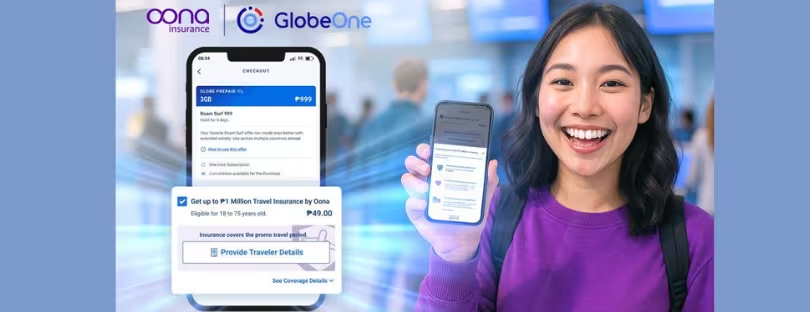
Voice and Data: What’s the Difference Anyway?
In today’s world, our smartphones are more than just communication devices; they’re portals to information, entertainment, and connection. We increasingly rely on them for both voice calls to stay in touch and mobile data to access the vast resources of the internet. This ever-growing dependence makes understanding the difference between these two functionalities crucial for managing roaming costs and maximizing our smartphone experience. Voice and Data in roaming
So what’s the difference, anyway?
Voice calls use a different part of your cellular carrier’s network compared to data. Here’s a breakdown of the key differences:
- Voice uses a circuit-switched network, which creates a dedicated connection between two phones for the duration of the call. This ensures smooth, uninterrupted conversation.
- Data uses a packet-switched network, which breaks down information into smaller packets and sends them over the network efficiently. This is suitable for transmitting various types of data like emails, webpages, or videos, but doesn’t require a dedicated connection.
Mobile Data: Freedom with a Price Tag
When you see 3G, 4G or LTE on your phone, you’re using mobile data, which allows for Internet connectivity regardless of location. You could be shopping in a mall in France, or tweeting from the top of the Eiffel Tower. There’s no need to connect to a network and enter a password in these situations. The catch, however, is that doing so can be very expensive if you’re on your domestic carrier’s roaming network. We’re talking 20 dollars a megabyte. Ouch!
Wi-Fi: Free But Limited
Now comes Wi-Fi. It is usually not too costly and often free, but the catch is that you have to stay in one spot. There are also a multitude of security risks associated with open networks that let anyone join. So sending that confidential email at the quaint Internet café you found is probably not your best bet. Not to mention that Wi-Fi’s limited range isn’t quite “mobile,” anyway. You need to be within range of a hotspot, and security risks abound on open networks. Sending sensitive information on public Wi-Fi is not recommended. Plus, Wi-Fi’s limited range makes it impractical for true mobility.
Security Tips: Voice and Data in roaming
- Avoid sensitive transactions on public Wi-Fi, such as online banking or credit card purchases.
- Consider using a VPN (Virtual Private Network) to encrypt your internet traffic on public Wi-Fi.
Data Usage Examples:
Let’s break down how mobile data gets used in our everyday activities:
- Downloading: Music, movies, apps, games – all these require data to be transferred to your device.
- Streaming: Watching videos on YouTube, Netflix, or sports apps consumes data. The higher the video quality, the more data you’ll use.
- Social Media: Scrolling through feeds, uploading photos and videos, using features like stories – all these activities use data.
- Web Browsing: Every website you visit uses data to load text, images, and videos.
- Online Gaming: Playing games online, especially those with high-quality graphics, can use a significant amount of data.
- Using Navigation Apps: Using GPS for navigation or ride-hailing services like Uber or Lyft requires data.
By understanding how these common activities use data, you can be more mindful of your usage and avoid exceeding your data plan. Check out those eSIMs if you don’t need a lot of data, if you are a big spender of data, check out this.
The eSIM Advantage: Global Connectivity Redefined
This is where eSIM technology comes in! An eSIM is a built-in chip in your phone that allows you to store multiple mobile network profiles. With an eSIM, you can easily purchase data plans from local providers in the countries you visit, avoiding expensive roaming charges.
Travel Smarter with eSIM
By using eSIM, you can:
- Stay connected: Enjoy affordable data plans wherever you go.
- Save money: Ditch roaming fees and get local data rates.
- Be flexible: Switch between data plans as needed during your trip.
Voice Calls: Traditional vs. Data (VoIP)
Understanding Voice Calls:
- Traditional Voice Calls: These calls utilize a dedicated connection on your cellular carrier’s network, ensuring clear and uninterrupted communication. However, roaming charges can be significant when traveling internationally.
- Voice over IP (VoIP) Calls: These calls leverage data networks like Wi-Fi or mobile data to transmit voice data as packets. Popular apps like WhatsApp, Skype, and FaceTime use VoIP technology. While offering potentially lower costs, call quality can depend on internet connection strength.
Roaming Costs: Understanding the Charges
- Roaming Charges: When you use your phone’s cellular network outside your home country, you incur roaming charges. These fees can vary significantly depending on your carrier, destination country, and call duration. Be sure to check your carrier’s roaming rates before traveling internationally.
Important Considerations: Voice and Data in roaming
- Not all phones are eSIM compatible. Check your phone’s specifications before your trip.
- Research local data plans in your destination countries to find the best deals.
- Be mindful of data usage, even with a local plan, to avoid unexpected charges.
So now that we’re tech savvy Internet consumers, let’s implement this knowledge. If you’re going to use mobile data, it’s best to make sure you’re not running background apps or allowing those things called “push” notifications to go off. These slowly eat at your plan. So save the auto updates for the hotel once you’re back for the evening.
So what’s the takeaway? Be wise about your data consumption! We all know that mobile data services can be affordable (with people like us figuring out how to supply them anywhere, because connectivity is a necessity!), but we also want you to get the most out of them. So next time you travel, configure your device to have auto updates turned off, make sure your mobile data is good to go when it’s necessary and save that Instagram update for the hotel. Voice and Data in roaming










